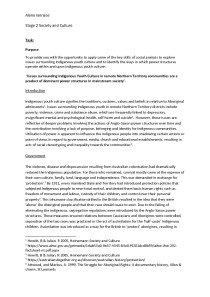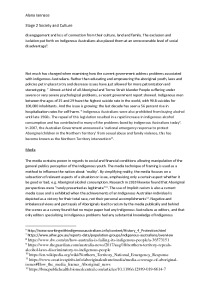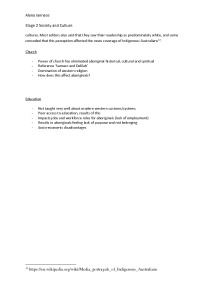Aboriginal Youth Culture And Power Structures



Introduction. Government. Media. Church. Education.
Indigenous youth culture signifies the traditions, customs, values and beliefs in relation to Aboriginal adolescents . Issues surrounding indigenous youth in remote Northern Territory districts include poverty, violence, crime and substance abuse, which are frequently linked to depression, insignificant mental and psychological health, self-harm and suicide . However, these issues are reflective of deeper problems involving the actions of Anglo-Saxon power structures over time and the contribution involving a lack of purpose, belonging and identity for Indigenous communities. Utilisation of power is apparent to influence the indigenous people into shadowing certain actions or point of views in regard to government, media, church and educational establishments, resulting in acts of racial stereotyping and inequality towards the communities .
The violence, disease and dispossession resulting from Australian colonisation had dramatically reduced the Indigenous population. For those who remained, survival mostly came at the expense of their own culture, family, land, language and independence. This was demanded in exchange for 'protection'. By 1911, every mainland State and Territory had introduced protection policies that subjected Indigenous people to near-total control, and denied them basic human rights such as freedom of movement and labour, custody of their children, and control over their personal property . This inhumane classification drilled in the British resulted in the idea that they were ‘above’ the Aboriginal people and that their race should cease to exist. Due to the failing of eliminating the indigenous, segregation regulations were introduced by the Anglo-Saxon power structures. These measures ensured relations between Caucasians and Aborigines were controlled, separation of the two races was practiced or the act of assimilation for the ‘half-caste’ Indigenous children. Assimilation was introduced as a way for the British to ‘protect’ aborigines, resulting in

















